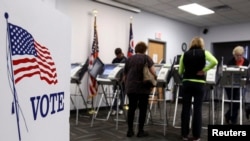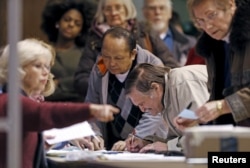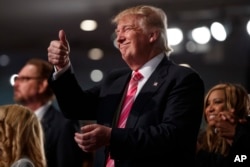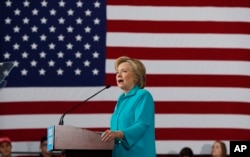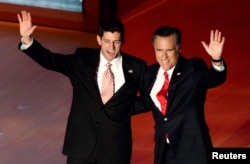Election Day in the United States is still two months away. But though U.S. political campaigns at times seem endless, voters in some states can begin casting votes this month — even before the first general-election debate.
More than two-thirds of the country's 50 states allow a voter to cast a ballot in person before the November 8 election. All of them offer a way to vote by mail if a voter cannot make it to the polls that day.
Most of the early voting states begin the process two or three weeks before the election, though some begin earlier. Minnesota and South Dakota are first, allowing voters to hand in their ballots as early as September 23, three days before the first scheduled debate between the Democratic candidate, former U.S. Secretary of State Hillary Clinton, and the Republican nominee, real estate mogul Donald Trump.
Two other candidates – Libertarian Gary Johnson and the Green Party’s Jill Stein – are not polling high enough in national political surveys to be invited to the debate.
A lot can happen in the final months of campaigning. Voters will be inundated with advertising and will have the opportunity to watch three debates between the presidential candidates and another featuring those running for vice president.
Both Trump and Clinton planned Labor Day rallies on Monday, a national U.S. holiday honoring American workers. Both are meeting with workers in Cleveland, a large city in the Midwestern battleground election state of Ohio.
Later, the Republican nominee is campaigning at a community fair in Youngstown, Ohio, while Clinton is appearing at a Labor Day event in Hampton, in Illinois, a midwestern state where Clinton holds a substantial edge over Trump. Hampton is a village just across the Mississippi River from the closely contested rural state of Iowa.
A graph depicting the race between Democrat Hillary Clinton and Republican Donald Trump during the past year shows Clinton building a lead for four or six weeks at a time before a Trump rally that brings their poll numbers nearly together.
Trump began his current surge after Clinton peaked in early August, after the Democratic National Convention. There, she and others lobbed taunts against the Republican nominee for four straight nights.
The latest polls put Clinton up by about four points nationally, even as she continues to narrowly lead in several key states that will likely determine who wins in November.
Those same polls continue to show that more than half of registered voters have an unfavorable view of both Clinton and Trump.
Recent history as a gauge
At this point in the 2012 presidential race, incumbent Barack Obama was about even with his Republican rival, Mitt Romney, in a range of national polls. But in the final two months, public opinion swung wildly.
Obama took a big lead for most of September; Romney briefly pulled ahead in early October before trailing the president by about one point on Election Day. Obama won the national popular vote by about four points.
In 2004, President George W. Bush led then-senator John Kerry by six points in early September. But Kerry made a charge in October that year, trailing by only 1.5 points by the time November arrived. He lost to Bush by 2.5 points.




